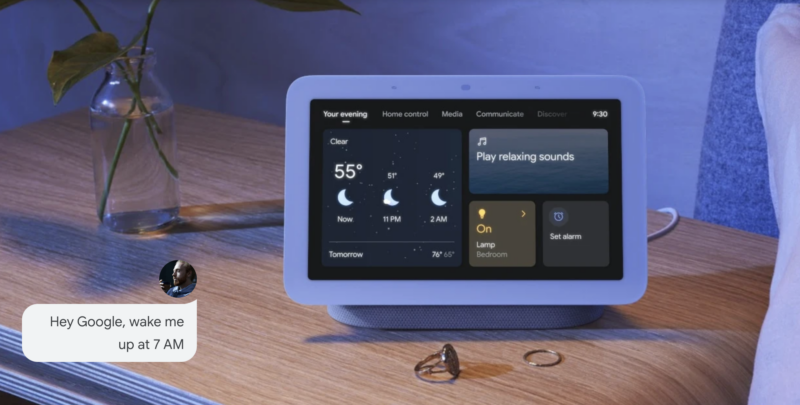The Pixel and Ink-Stained Wretch vs. Residential Tech: My Experiences with Nest and Lyric
Now that I own a home out in suburbia, I have cause to sample the residential side of the tech market. As winter approaches, I’m making a two-pronged attack on the elements — low tech (weatherstripping and better attic insulation) and high (a new fancy thermostat). As this is a half-technology blog we’ll focus on the latter, specifically my trials and tribulations with the Nest learning thermostat. Was this a good experience? Read on!
What to look for?
There are a few elements I look at when evaluating technology. At first look, the Nest passed most of them:
- It is physically attractive and solidly constructed: This is a matter of taste, but the Nest feels solid and has a clean minimalist look.
- It has an intuitive and pleasant UI: Again a matter of taste; I think that the Apple-inspired minimalist aesthetic in UI has gone perhaps too far, but the Nest is not only simple to use, but gives clear feedback as to what is happening; when the system is heating, for example, the face lights up red and says “heating”. The mobile and web UI – an image of the actual unit – is clear and easy to use.
- It has interesting and useful features: Another win. It learns not only your schedule, but the time it takes your system to reach temperature. It connects to a web portal. It gives monthly reports on energy usage. It would be nice to have geofencing, but one can even workaround that using the IFTTT service.
There is, of course, something very important and basic missing from this list. More on that later.
Unboxing the unit was a great start; the thermostat display, base and even a little screwdriver are packaged with the kind of care and attention to detail that says you’re getting something special. It mounted to the wall easily enough and, after running some wires (I was replacing an old high-voltage thermostat which is, for the nonce, retired in place). It mounted easily to the wall, and I had an easy enough time wiring it to my system. And then the trouble started.
The first issue is that it wouldn’t turn the heat on. Some troubleshooting with Nest support (available 24/7, albeit with fairly long wait times) revealed a defective base unit. Back to the store, swapped the unit for a new one, reinstalled. Success! It lit up, heated when it said it was heating. And also heated when it said that it wasn’t.
Trials and Tribulations
Some quick Googling revealed this as a known and fairly common issue, albeit one which Nest does NOT disclose in any of their documentation; sometimes two-wire setups as the unit inadvertently calls for heat when charging its battery. No problem: I’m a technology professional. It’s easy enough for me to add another wire, add a low-voltage transformer and… voila. No more power issues. It only called for heat when it said it was calling for heat, battery voltage remained consistent, but there was a new problem: the temperature on the display had no relationship to the temperature in the room. It read anywhere from dead-on to 7 degrees warmer.
After more calls to tech support then offered to send a new base which they assured me is a different model than the ones stores might have. While I appreciate this, the fact that the units in stores have a known issue but have not been recalled and replaced is another warning bell. If you know that the units in the field don’t work, it’s a bad idea to let people get their hands on them and sour their image of your product. The good news for Nest is that prior versions souring the experience ended up being a non-issue for me, as the new unit did exactly the same thing; cool in the house, just under 70 on the spirit thermometer built into the old thermostat, 78 degrees on the Nest. It was not 78 degrees.
This brings up the qualification I missed above:
- Performs its primary function.
One of my last trouble-shooting calls with Nest support went something like this:
They: Sometimes the Wi-Fi makes the temperature read higher. I want you to turn off your Wi-Fi on the thermostat for about five hours, see if the temperature normalizes.
Me: What is the long-term solution here? Without the Wi-Fi the thing isn’t really all that useful.
They: You might have to change something on your router.
Me: What would I have to change on it?
They: (pause) — uh… settings.
Me: (through gritted teeth): Which settings?
They: Maybe the channel?

Everyone at Nest tech support was professional and courteous, but they clearly didn’t have a solution. A Google for “Nest Reading…” autofills for “wrong temperature” “high” and “too high” as four of the top five results.
Hardware is Hard
The barriers to creating and marketing hardware have never been lower, with “Internet of Things” as the latest buzzword, crowdfunding for sexy ideas and the possible reward of a buyout from a big player (Nest was purchased by Google for a billion dollars). The problem is that creating and testing good hardware isn’t always easy. Is is a subtle design flaw in the Nest that makes it heat up sometimes and not others? Perhaps. What’s clear is that features and even UI can be easier to design and implement than solid, reliable performance.
How does this story end? I took the last Nest back to the big box store from whence it came, returned home with a Honeywell Lyric. It doesn’t have the fancy learning algorithm like Nest, nor is the UI as nice or slick. What it does do is accurately control the temperature, taking advantage of Honeywell’s decades of experience in the field.
I’m sure that with the money available, companies such as Nest will eventually catch up and produce hardware worth the premium they charge. That time, alas, does not yet seem to be here. Hopefully Lyric will release an API in time for my next big project, to be discussed sometime next year.





